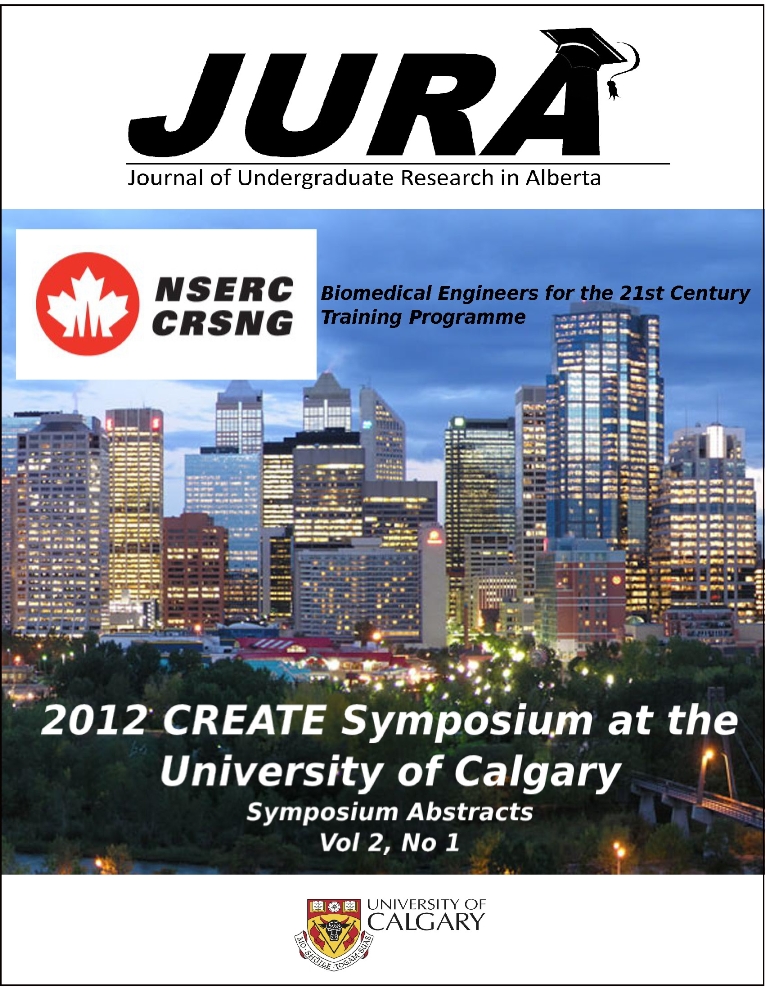Devleoping a methodology to measure the regeneration of reindeer antlers
Abstract
Antler regeneration is widely known as one of the best cases of complete organregeneration in mammals; however, little is known about the mechanism behindantler regeneration or the directional growth of antlers during the growth period.To grasp a better understanding of how and when different branches of the antlergrow, a pilot study was launched in May 2012 to try and develop a methodology tomeasure the regeneration of reindeer antlers. Using a Swiss Ranger 4000 (SR4000)range camera, data was captured from three reindeer at the University of CalgarySpy Hill Campus Farm once a week until mid-July. Using empirical data from initialepochs, a photo capture time of 63.6ms (16 FPS) was chosen for the camera, withdata of interest captured at a range varying from approximately 1.2 - 2.0 metres. Aftersegmenting the antlers from the range image in 3D, path lengths were computedalong the skeletonized, two-dimensional range image of individual antlers. Distancesfrom each epoch were then differenced in order to generate an overall growth rateof the antler. While more time is required for conclusive results, preliminary resultsshow that reasonable lengths can be calculated using this method; the final threedimensionalpath length of one of the antlers being measured at approximately 2.243m,giving an approximate growth rate of about 2.67cm/day across the longest path ofthe antler, which is within our expected values of about 1-4cm/day of overall dailygrowth. However, the time-cost of post-processing remains large, and is primarilylimited by factors such as antler-extraction time, post-identification of antler regions,and computation time. Future work may involve automating the extraction and postidentification,to improve efficiency of the method. Furthermore, greater consistencyin the data capture methodology is desired to increase both quantity and quality ofacquired data.Downloads
Download data is not yet available.
Downloads
Published
2012-10-25
Issue
Section
Articles
License
Authors retain all rights to their research work. Articles may be submitted to and accepted in other journals subsequent to publishing in JURA. Our only condition is that articles cannot be used in another undergraduate journal. Authors must be aware, however, that professional journals may refuse articles submitted or accepted elsewhere—JURA included.


